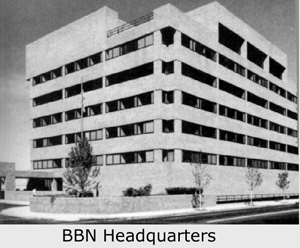Today is the anniversary of the Galveston Hurricane of 1867 that caused $1 million in damage ($12.3M in today’s dollars, or the equivalent of $1.3 billion in share of GDP). Also the Louisiana Delta hurricane of 1893, which had winds of 100 miles per hour and a 12 foot storm surge that killed 1500 people. In 1882 on this day a severe windstorm in northern California and Oregon did severe crop damage and blew down trees.
 How do we (or, in this case, Intellicast) know all this?
How do we (or, in this case, Intellicast) know all this?
Let’s look at the fourth major hurricane of this date: the one that struck the Georgia coast in 1898, washing away an entire island, Campbell Island, and killing 50 residents there, as well as all but one of the residents of St. Catherine’s Island. The storm surge at Brunswick is estimated at 19 feet.
“Worthy of note is the brief period of time which has seen the widespread deployment of remote sensing systems, which may accurately place the center of a landfalling storm in data sparse or lightly populated coastal regions.”
—“A Reevaluation of the Georgia and Northeast Florida Hurricane of 2 October 1898 Using Historical Resources,”
Last Modified on Thursday, 8 October 1998, 11:00 AM,
Al Sandrik, Lead Forecaster, National Weather Service Office, Jacksonville, FL
Sandrik provides a convenient table, Technical Advances in systems for observing tropical cyclones, 1871 through 1980. In 1898 there was some sort of Hurrican Watch Service; they had landline telegraph; and historians have access to ship’s logs. Ships didn’t get wireless telegraph until 1905, so ship’s logs were no use to people on shore at the time.
Sandrik mines newspaper reports, personal letters, and measurements of buildings that are still standing, as well as finding some oaks that were blown down but still growing, providing wind direction at that point. With all this data he concludes that the wind only blew west north of Camden County (the Georgia coastal county just north of Florida) while it reversed and blew east there. So the eye had to have come ashore in Camden County, not 30 miles farther north as previously thought. Also, this was at least a category 3 hurricane, maybe 4, not a cat 2 as previously thought.
He compares records for other hurricanes earlier and later, and concurs with another researcher that for nineteenth century hurricanes,
“…the apparent low frequency on the Gulf coast between Cedar Key and St. Marks is not believed to be real. This area is very sparsely settled and the exact point where many of the storm centers reached the coast is not known, so there has been a natural tendency to place the track too close to the nearest observing point.”(1)
In other words, nineteenth century hurricanes were more common in places that were then sparsely populated but now are beach resorts. This has consequences for disaster planning. Not only that, but 19th century hurricanes were more severe than previously thought, which means that 20th century expectations of hurricane severity in the U.S. southeast may have been too rosy (this is why the recent spate of hurricanes can’t be used as evidence of global warming, although there are plenty of other pieces of evidence for that). Understanding the past has value for risk planning.
We don’t have to do all this forensic research and statistical interpolation for modern hurricanes, because we never miss seeing one anymore, nor its track or intensity. This is because we have better means of observation and coordination.
A radiosonde network (weather balloons) was added in the late 1930s, and organized reconnaissance (hurricane chasing airplanes) in the 1940s. To draw an Internet analogy, if ship logs were somewhat like web server logs, weather balloons are perhaps like web monitoring companies.
The satellites and radar we are all used to seeing on TV and the Internet all date from the 1960s and later. The Internet analogy is what InternetPerils is doing regarding a holistic and synoptic view of the Internet.
Aircraft satellite data links were added in the late 1970s; sort of flying ship log links. Ocean buoys were added about 1973; these are perhaps like honeypots and blacknets.
As Sandrik remarks:
“…the more diverse and accurate the base information used to generate a storm track, the greater the level of confidence that can be ascribed to that particular track.”
This is why multiple sources of different types of data such as are collected by the DNS-OARC participants are important, as is the coordination being attempted by that body. We need both sensing buoys in the ocean of the Internet and ship, radar, aircraft, and satellite reconnaissance, with networks of coordination and display among them.
-jsq


